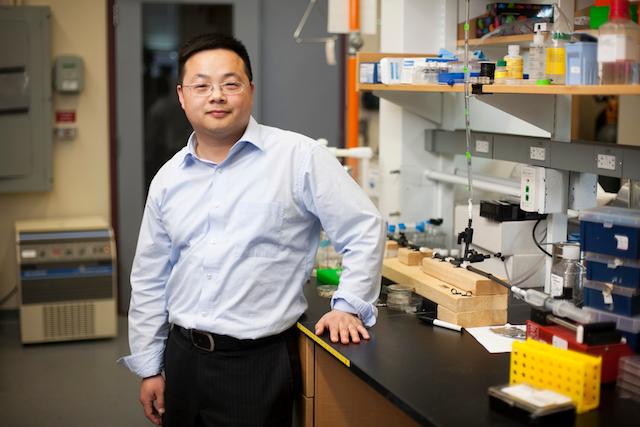Engineering genome editing systems

A group of Tufts researchers from the Departments of Biomedical Engineering and Electrical and Computer Engineering, led by Associate Professor Qiaobing Xu, published a study of delivery methods of clustered regularly interspaced short palindromic repeat-CRISPR-associated protein (CRISPR-Cas) systems, in the journal Trends in Biotechnology. Xu, along with postdoctoral scholar Yamin Li, Ph.D. student Zachary Glass, and Matthew Lee, E20, examined existing delivery methods for the Cas9 enzyme often used in combination with gRNA (guide RNA) to execute genome editing.
In the paper, the researchers outline the benefits and potential problems of different delivery methods and how these methods could affect genome editing activities in the body. Cas9 can be delivered as a DNA or mRNA molecule encoding for the cas9 gene, or as a functional ribonucleoprotein (RNP). Ensuring an effective and safe CRISPR process through its delivery method will be essential in the treatment of a wide range of genetic disease and disorders in a clinical setting.
Department:
Biomedical Engineering